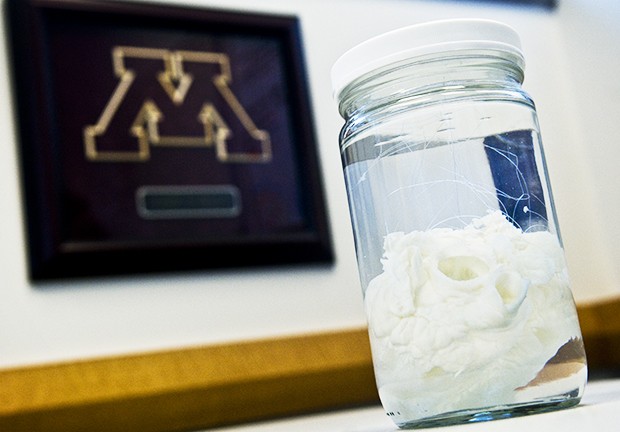ItâÄôs been a whirlwind year for Doris Taylor: growing a beating heart in her laboratory January 2008, meeting with international news organizations, seeing her work featured on the Oprah Winfrey show and now being nominated for Time MagazineâÄôs 100 Most Influential People award. Somehow, amid these demands on her time, Taylor has continued to push the boundaries of her research, bringing the procedure âÄî whole organ decellularization âÄî closer and closer to being viable for human transplantation. The breakthrough experiment involved draining a rat heart of its cells and reinfusing the remaining shell with neonatal heart cells from other rats. The cells developed and grew in the lab, eventually advancing enough to get the dead heart pumping and beating again. âÄúThe heart is complicated,âÄù Taylor, who heads the University of MinnesotaâÄôs Center for Cardiovascular Research, said. âÄúItâÄôs got four chambers, itâÄôs got blood vessels, itâÄôs got valves, and itâÄôs not simple to think about building those.âÄù The idea, according to Taylor, is that shells of pig organs, or extra cellular matrix scaffolds, will eventually be treated with human stem cells to grow organs that can be used for transplantation in people who have organ failure, making them readily available to patients. In the year since TaylorâÄôs work was published in the journal Nature Medicine, her team has continued the research, expanding to other rat organs, like the liver, kidneys and lungs. The lab is also working to optimize the best procedures for decellularizing pig hearts, said Claudia Zierold , the scientific director for the CCVR. The pig hearts are the next step in the journey toward human transplantation. As of Friday, more than 100,000 people in the United States are currently waiting for new organs, according to Organ Procurement and Transplantation Network. Last year, about 30,000 people received organ donations, said Mandy Claggett , a spokeswoman for the United Network for Organ Sharing. Claggett said if TaylorâÄôs vision for research works, it would have a significant impact on the way organ transplantation currently occurs. âÄúI think anything that would help alleviate the long wait that people are waiting âĦ would be favorable,âÄù Claggett said. Given the proper resources, Taylor said she believes the process could be in clinical trials within five to six years. She said itâÄôs difficult to receive letters and emails every day from parents, children and friends of people dying of chronic diseases, asking her to help save them. âÄúItâÄôs grueling to realize that what youâÄôre doing has somebodyâÄôs name on it, if you will,âÄù she said. âÄúOn the other hand, itâÄôs really incredible to have someone say to you, âÄòHi, IâÄôve got heart disease and IâÄôm convinced youâÄôre going to help save my life somedayâÄô.âÄù Taylor remains humble about her accomplishments, including the feature on Oprah and the Time nomination. âÄúItâÄôs certainly exciting to have someone recognize what we do,âÄù she said. The next area of focus is working with livers, and they too were featured alongside the regenerated hearts by Oprah. âÄúEight months ago, we could barely say anything but âÄòheart.âÄô Now weâÄôre pretty far down the road in thinking about organs like liver,âÄù Taylor said. âÄúAnd [we] have started conversations with collaborators all around the world about how we might move this forward to other tissues.âÄù In a year, Taylor said she hopes to be even closer to bringing decellularization to human organ transplantation. The next steps are securing continued funding and talking to industry about commercializing the process. âÄúIt really speaks to the need thatâÄôs out there for people who are dying of chronic disease,âÄù Taylor said. âÄúI also think that it provides a really exciting concept and itâÄôs so simple that it excites people who wouldnâÄôt otherwise get excited about this.âÄù âÄî Emma L. Carew is a senior staff reporter











